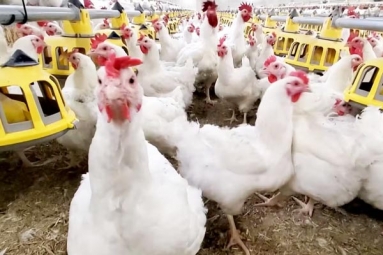
(Image source from: A Mother's Nutrition)
When we talk about ways the world can help end preventable child deaths, we have to pay greater attention to malnutrition--the cause of almost half of all deaths of children under age 5. But as we think about how to tackle the pervasive and deadly problem of child malnutrition, we have to put greater focus on the nutrition of mothers.
A little understood fact is that the solution to preventing children from dying from malnutrition actually begins with the nutrition of mothers before and during their pregnancies. As the mother's nutrition goes, so goes the child's.
When mothers don't survive childbirth, it is their children that suffer the most. When babies aren't able to immediately breastfeed from their mothers after birth and into their first 6 months of life, they lose out on the immunity-boosting power of breast milk that protects them from infections and disease. In the absence of breastfeeding, an infant is more than 14 times more likely to die in the first six months of life than an exclusively breastfed baby.
Recent studies on maternal nutrition have also found that the number of women dying during childbirth as a result of hemorrhage and preeclampsia--the two leading causes of maternal deaths-- can be minimized dramatically by ensuring that pregnant women have access to diets with adequate iron and calcium.
Malnutrition can also be passed down from mother to child. The phenomenon is known as the intergenerational cycle of malnutrition and it starts with a malnourished woman who is stunted, or too short for her age, as a result of a chronic lack of nutrients. She is not only at greater risk of complications during childbirth, but she is also at greater risk of delivering a low birth-weight baby. Low birth-weight babies are less likely to survive and more likely to suffer illness and delayed emotional and intellectual development. The cycle continues as low birth-weight baby girls can grow up to become stunted adolescents and stunted women...which takes us back to a malnourished woman who eventually becomes pregnant. Thus, the cycle of poor nutrition repeats itself, and malnutrition gets passed down from one generation to the next.
In many parts of the world, this cycle is perpetuated in large part because girls and women are often treated as less valuable than their male counterparts. Early child marriages and adolescent pregnancies make the intergenerational problem of malnutrition that much worse.
Leaving no one behind means supporting good nutrition for women before and during pregnancy in order to turn this vicious cycle of malnutrition into a virtuous cycle where moms and babies thrive. Leaving no one behind also means societies need to invest in policies, programs and practices that put women in control of economic resources, give them greater control over their destinies, and empower them to nourish and care for their bodies and those of their children.
When the world invests in nutrition during the critical 1,000-day window from a woman's pregnancy to her child's 2nd birthday, it's a double win: it saves the lives of mothers and children, and it helps break the cycle of malnutrition and poverty.
Source: huffingtonpost




















